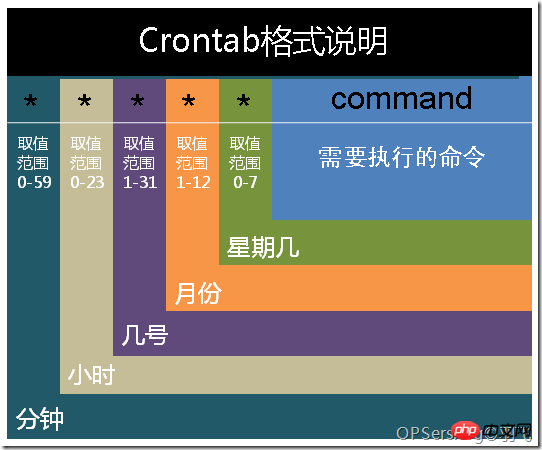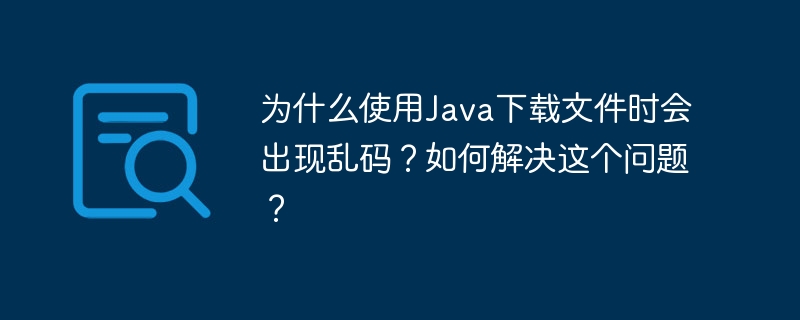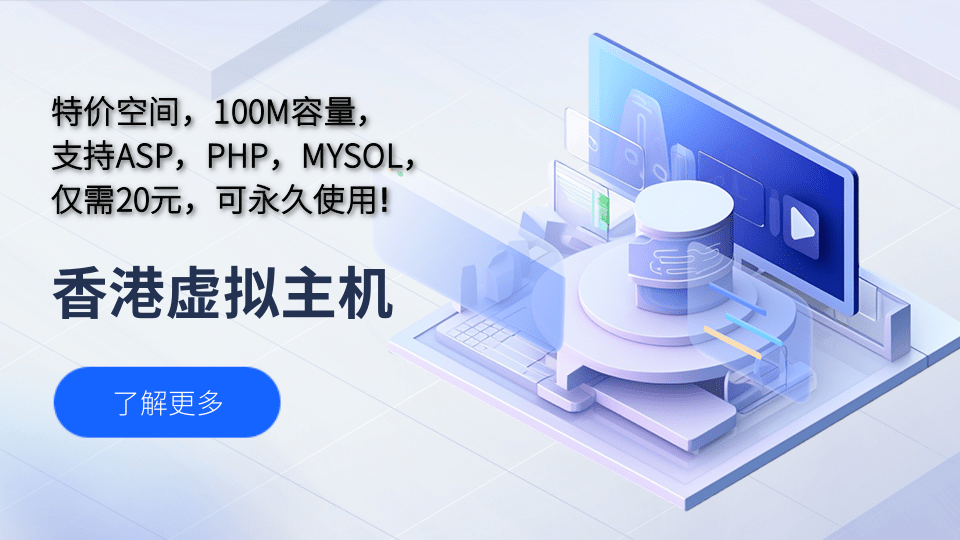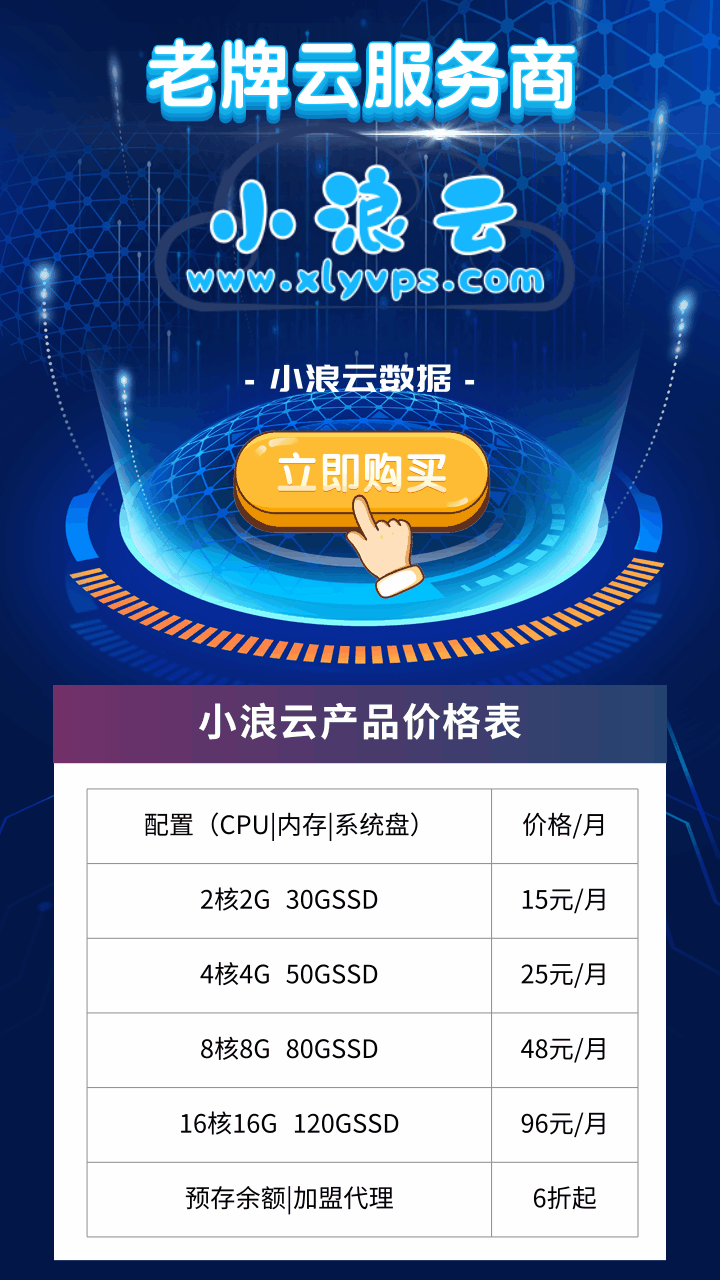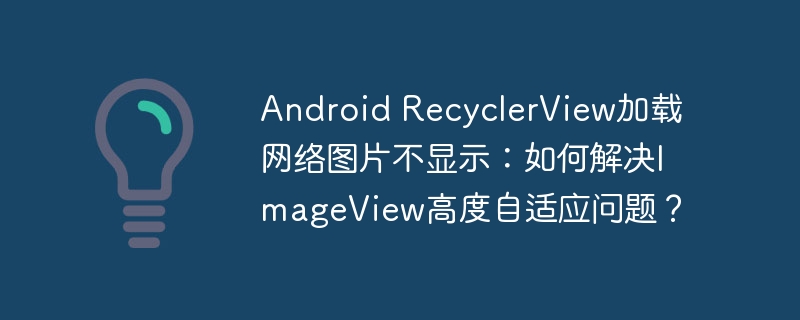
android RecyclerView加载网络图片显示问题及解决方案
在Android开发中,使用RecyclerView加载网络图片是常见操作,但图片加载失败的情况时有发生。本文针对RecyclerView中ImageView无法显示网络图片的问题,提供详细分析和解决方案。
问题描述: 开发者使用RecyclerView显示服务器提供的图片列表,但图片无法正常显示。RecyclerView的item布局仅包含一个ImageView,layout_height属性设置为wrap_content,并使用glide加载图片。当为ImageView设置固定高度后,图片则能正常显示。
代码分析:
布局文件 (recyclerview_item_image.xml):
<?xml version="1.0" encoding="utf-8"?> <ImageView android:id="@+id/image" android:layout_width="match_parent" android:layout_height="wrap_content" android:scaleType="centerCrop" tools:src="@drawable/background" xmlns:android="http://schemas.android.com/apk/res/android" xmlns:app="http://schemas.android.com/apk/res-auto" xmlns:tools="http://schemas.android.com/tools"/>
适配器代码 (ImageRecyclerViewAdapter.Java):
public class ImageRecyclerViewAdapter extends RecyclerView.Adapter<ImageViewHolder> { private final Activity activity; private final List<String> images; // ... 省略构造函数 ... // ... 省略onCreateViewHolder ... @Override public void onBindViewHolder(@NonNull ImageViewHolder holder, int position) { String src = this.images.get(position); ImageView imageView = holder.getImageView(); Glide.with(this.activity.getBaseContext()) .load(src) .into(imageView); } // ... 省略getItemCount ... }
问题根源: ImageView 的 layout_height 属性设置为 wrap_content。RecyclerView布局时,由于图片未加载完成,ImageView无法确定自身高度,导致无法正确渲染图片。
解决方案:
以下三种方法可有效解决此问题:
-
设置固定高度: 最简单的方法,为 ImageView 设置固定高度,例如 android:layout_height=”200dp”。这确保 ImageView 有足够空间显示图片。
-
使用占位符: 在Glide加载图片时设置占位符,图片加载前显示占位图,提升用户体验。代码如下:
Glide.with(this.activity.getBaseContext()) .load(src) .placeholder(R.drawable.placeholder) // 设置占位符 .into(imageView);
- 动态设置ImageView高度: 更灵活的方法,根据图片宽高比动态设置 ImageView 高度,避免图片变形。使用Glide的 RequestListener 监听图片加载完成事件,根据图片宽高比计算并设置 ImageView 高度。代码如下:
Glide.with(this.activity.getBaseContext()) .load(src) .addListener(new RequestListener<Drawable>() { // ... 省略onLoadFailed ... @Override public boolean onResourceReady(Drawable resource, Object model, Target<Drawable> target, DataSource dataSource, boolean isFirstResource) { int width = imageView.getWidth(); float aspectRatio = (float) resource.getIntrinsicWidth() / (float) resource.getIntrinsicHeight(); int height = Math.round(width / aspectRatio); imageView.setLayoutParams(new ViewGroup.LayoutParams(width, height)); return false; } }) .into(imageView);
选择哪种方法取决于具体应用场景和需求。
© 版权声明
文章版权归作者所有,未经允许请勿转载。
THE END









